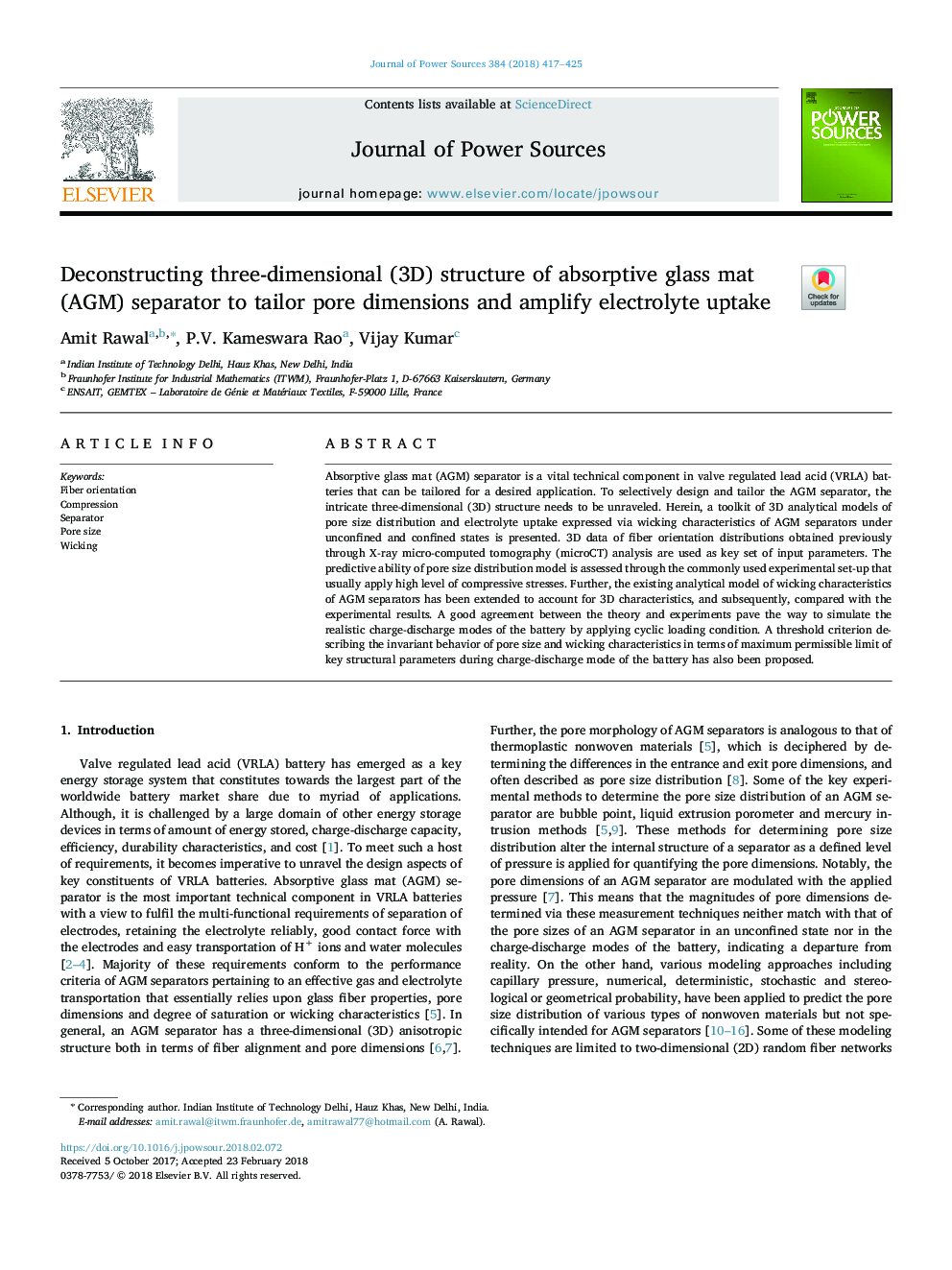| Article ID | Journal | Published Year | Pages | File Type |
|---|---|---|---|---|
| 7725452 | Journal of Power Sources | 2018 | 9 Pages |
Abstract
Absorptive glass mat (AGM) separator is a vital technical component in valve regulated lead acid (VRLA) batteries that can be tailored for a desired application. To selectively design and tailor the AGM separator, the intricate three-dimensional (3D) structure needs to be unraveled. Herein, a toolkit of 3D analytical models of pore size distribution and electrolyte uptake expressed via wicking characteristics of AGM separators under unconfined and confined states is presented. 3D data of fiber orientation distributions obtained previously through X-ray micro-computed tomography (microCT) analysis are used as key set of input parameters. The predictive ability of pore size distribution model is assessed through the commonly used experimental set-up that usually apply high level of compressive stresses. Further, the existing analytical model of wicking characteristics of AGM separators has been extended to account for 3D characteristics, and subsequently, compared with the experimental results. A good agreement between the theory and experiments pave the way to simulate the realistic charge-discharge modes of the battery by applying cyclic loading condition. A threshold criterion describing the invariant behavior of pore size and wicking characteristics in terms of maximum permissible limit of key structural parameters during charge-discharge mode of the battery has also been proposed.
Related Topics
Physical Sciences and Engineering
Chemistry
Electrochemistry
Authors
Amit Rawal, P.V. Kameswara Rao, Vijay Kumar,
